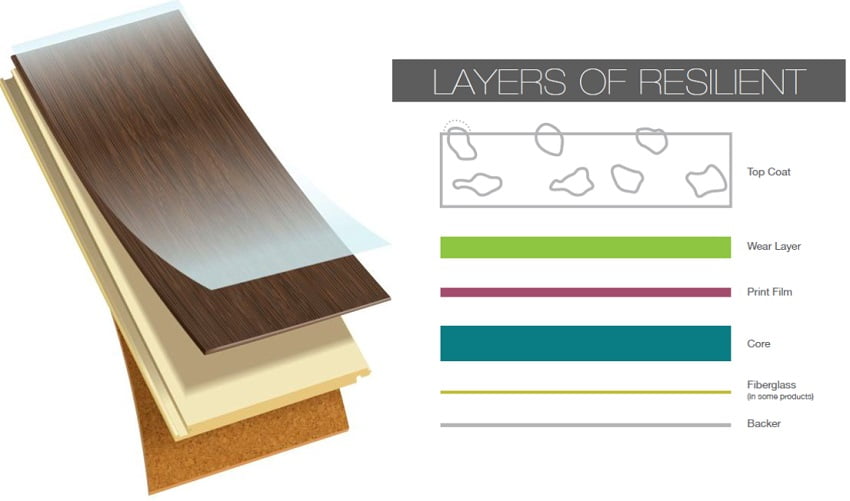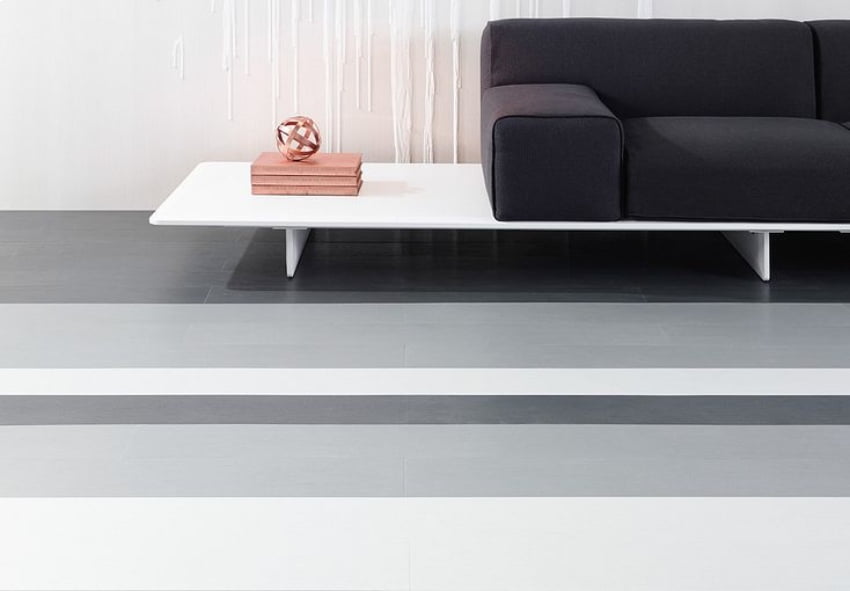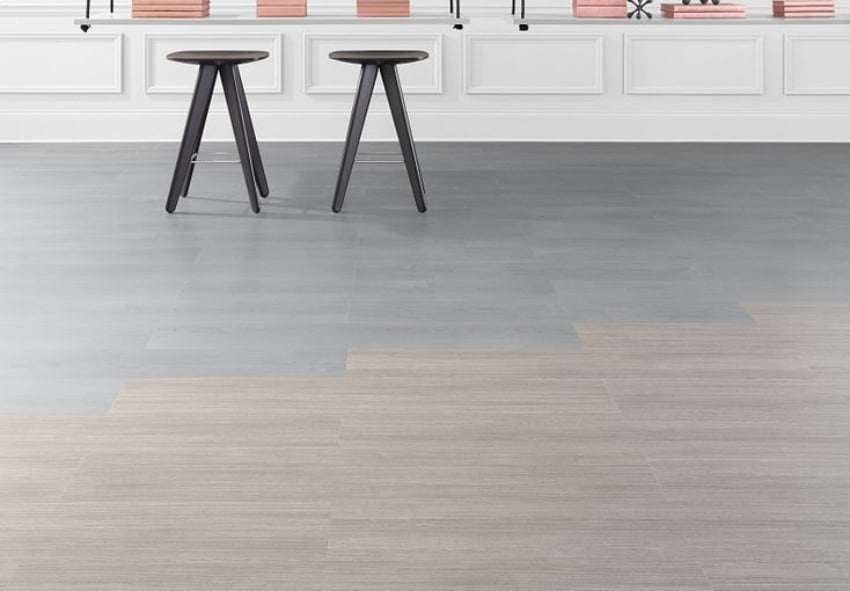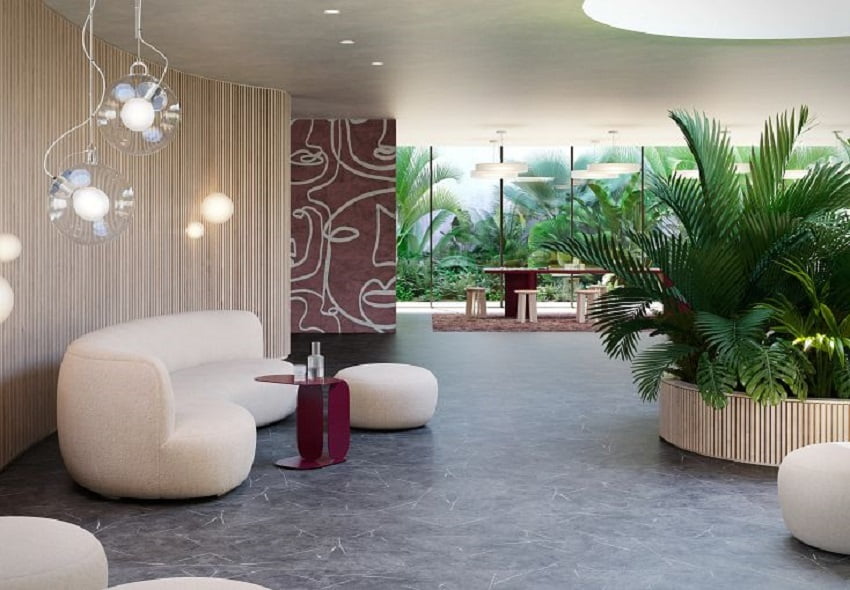INTERIOR BLOG
What is vinyl flooring, things to know about vinyl flooring
Table of contents
Vinyl flooring, a modern floor covering material in today’s life
In modern life, many of us have heard and seen vinyl flooring. But not everyone knows what vinyl flooring is, what materials it is made of and how it is applied in life.
Let’s find out with Minh Duc what vinyl flooring is. How is it structured, how is it classified? How to apply and choose to use the product? To know these things, first, let’s find out:
What is vinyl?
First, it can be confirmed that Vinyl is a man-made material. It is not a naturally occurring material. This material is a compound synthesized by ethylene and chlorine. These two ingredients are abundant in crude oil and common salts. Through processing, they combine to form vinyl chloride. Through polymerization, they will create Polyvinyl Chloride (PVC), also known as Vinyl. PVC will change physical and mechanical properties depending on the proportion of additives and plasticizers added during the manufacturing process. PVC itself is not toxic. However additives or excess VC monomers in the production process can be toxic to human health.
Since 1937, PVC has been produced on a complete industrial scale in Germany and then in the USA. Nowadays, it is widely used in daily life. It is present in almost every corner of current social life. In the furniture manufacturing industry, its most common applications are as upholstery materials (vinyl leather) or flooring materials (vinyl flooring).


What is the structure of vinyl flooring?
Basic vinyl flooring is composed of different layers including:
- Topcoat: A surface layer that hardens and increases surface tension. Helps protect the product from being dirty, ensuring the durability of the product.
- Transparent layer (Wear layer): Has anti-wear, anti-slip, anti-mildew effect. Helps protect the product’s texture (pattern) film.
- Print film: This film creates delicate wood grain or diverse patterns. Vinyl color is very rich, giving consumers many choices.
- Core layer: Made up of PVC or other fillers. The main features of the product formed by this main layer are resistance to warping when temperature changes, elasticity, resistance to fire spread or bearing capacity.
Fiberglass layer: This layer is commonly found in some high-end vinyl flooring products of Shaw Contract - Backer: This layer is usually made from plastic, it has the effect of preventing water vapor from under the floor, helping to protect and increase the life of the floor. In addition, it also helps to firmly attach the product to the floor with specialized glue.


At this point, you should be able to understand what vinyl flooring is and how they are constructed. So what criteria are they classified on?
Classification of vinyl flooring
Currently, vinyl flooring has many different types, which are classified based on:
- Material properties: homogeneous vinyl flooring (single-layer) and heterogeneous vinyl flooring (multi-layers)
- Product specifications: Roll type, Vinyl floor plate, Vinyl tile floor…
- Product use: Sports vinyl flooring used for stadiums, antibacterial vinyl flooring or medical vinyl flooring commonly used in hospitals, antistatic vinyl flooring commonly used in factories, residential vinyl flooring, and vinyl wall panels…


Advantages of vinyl flooring
- Highly elastic, durable, good bearing, and scratch-resistant.
- No cracking or breaking due to impact or the effects of mechanical forces.
- Good sound insulation, limit noise
- Few or no seams, and good floor flatness.
- Easy to clean, easy to maintain, antibacterial ability
- Anti-static, there are many types from 104Ω -106Ω (static conductive), and 107Ω -109Ω (static dispersion).
- Lightweight, easy to dismantle and install. The investment cost for the floor foundation is not too high.


What projects does vinyl flooring apply to?
From the above advantages which we can easily see. Vinyl flooring is widely used for many different projects such as:
- Hospitals, clinics, health care centers, laboratories.
- Factory manufacturing medical instruments and pharmaceuticals.
- Chemical plants and high-tech factories.
- Indoor and outdoor sports courts.
- School, amusement park.
- Restaurant Hotel.
- Residential houses and luxury apartments…


What should you consider when using vinyl flooring?
Currently, on the market, there are many different brands of vinyl flooring. As mentioned above, Vinyl itself is not toxic. But additives, and excess monomers in the manufacturing process, can have a direct impact on health. Therefore, you should choose products with brands, clear origins, and full certificates of safety standards, to avoid being cheap and causing harm to your body.
Two of the world-famous brands in the field of vinyl flooring production can be mentioned such as Shaw Contract (USA), Gerflor (France)… Are the brands that you can be completely assured of the quality?
Minh Duc hopes that this article will provide you with the most basic knowledge about vinyl flooring. From there, you can make the most accurate decisions when using this floor, and become a wise consumer.
Please pick up the phone and contact us immediately if you are in need of these products, or need more advice on vinyl flooring products.



